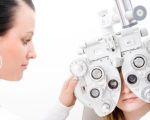- 1-Understanding-Glare-and-Its-Impact-on-Driving
- 2-Effective-Methods-to-Protect-Eyes-from-Glare
- 3-Best-Practices-for-Safe-Driving-in-Glare-Conditions
- 4-Real-Life-Examples-and-Personal-Experiences
- 5-Recommended-Products-and-Services-for-Eye-Protection
1. Understanding Glare and Its Impact on Driving
Glare, caused by intense light sources such as the sun or headlights, can severely impair a driver’s vision and reaction time. This phenomenon scatters light inside the eye, reducing contrast and making it difficult to see clearly. Understanding how to protect eyes from glare while driving is essential for maintaining road safety and preventing accidents.
There are two main types of glare: disability glare, which directly hinders vision, and discomfort glare, which causes eye strain and distraction. Both forms affect concentration and performance behind the wheel, especially during dawn, dusk, or nighttime driving.
1.1 Common Sources of Driving Glare
The sun’s low angle during morning and evening commutes often creates hazardous glare. Additionally, oncoming vehicles with high-beam headlights or reflective wet roads can intensify visual discomfort and risk.
2. Effective Methods to Protect Eyes from Glare
There are several practical strategies drivers can adopt to reduce glare and protect their eyes during travel.
2.1 Use Polarized Sunglasses
Polarized lenses filter out horizontal light waves responsible for glare, significantly improving visual clarity and comfort. Investing in high-quality polarized sunglasses designed for driving can make a noticeable difference.
2.2 Adjust Your Car’s Visor and Clean Windshield
Proper use of the vehicle’s sun visor helps block direct sunlight from entering your eyes. Equally important is maintaining a clean windshield free from streaks or dirt, as these imperfections exacerbate glare by scattering light.
2.3 Manage Your Speed and Following Distance
Slowing down slightly and increasing the distance between your car and others gives you more reaction time when visibility is compromised by glare. This adjustment supports safer decision-making under challenging visual conditions.
2.4 Avoid Looking Directly at Oncoming Lights
When faced with bright headlights, try to avert your gaze slightly to the right edge of the road, using road markings as a guide. This technique reduces the impact of glare while keeping your driving path in view.
3. Best Practices for Safe Driving in Glare Conditions
Beyond eye protection, incorporating broader safe driving habits enhances your ability to handle glare effectively.
3.1 Schedule Drives to Avoid Peak Glare Times
If possible, plan trips outside early morning or late afternoon hours when sun glare is most intense. This simple adjustment can dramatically reduce exposure.
3.2 Regular Eye Check-Ups and Corrective Lenses
Ensuring your prescription is up to date minimizes eye strain and improves contrast sensitivity, which is critical when driving in glare-prone conditions.
3.3 Keep Interior Car Lighting Minimal
Bright dashboards or interior lights can add to glare inside the vehicle. Dim these lights to maintain optimal external visibility.
4. Real-Life Examples and Personal Experiences
One driver shared how switching to polarized sunglasses transformed their daily commute, reducing headaches and improving reaction time during sunset drives. Before adopting this solution, the glare caused frequent squinting and near misses on busy highways.
Another story involves a professional driver who credits routine windshield cleaning and sun visor adjustments for avoiding multiple glare-related incidents, emphasizing the importance of small but consistent habits.
5. Recommended Products and Services for Eye Protection
For anyone looking to improve their protection against glare while driving, Eye Docs offers a range of specialized eyewear, including polarized sunglasses and anti-reflective lenses. Their professional eye care services also ensure your vision is optimized for safe driving conditions.
Integrating these products and expert advice into your routine can make your drives safer, more comfortable, and less fatiguing—helping you focus on the road ahead no matter the lighting challenges.








